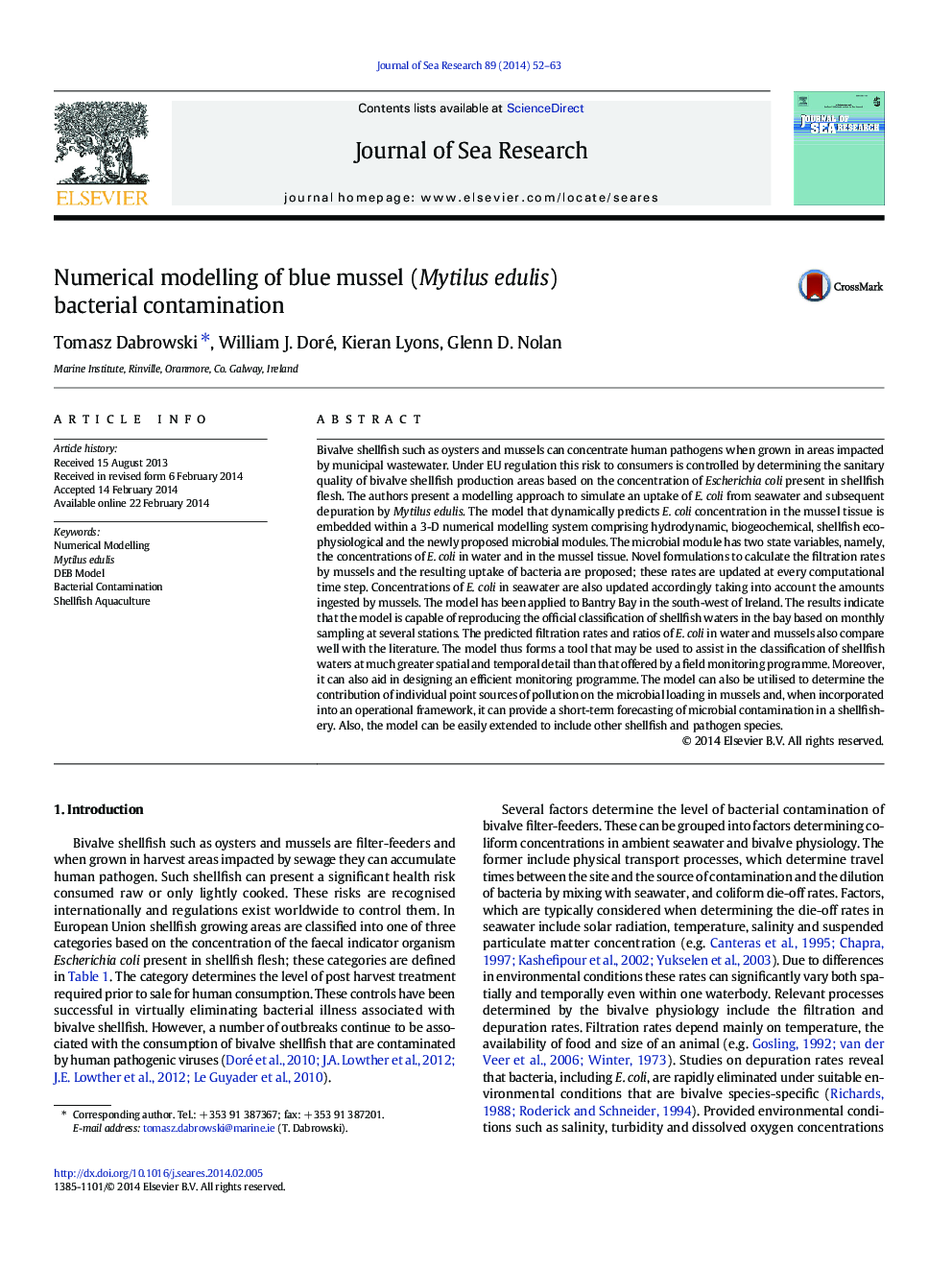| Article ID | Journal | Published Year | Pages | File Type |
|---|---|---|---|---|
| 4549814 | Journal of Sea Research | 2014 | 12 Pages |
•A microbial model for predicting M. edulis contamination by E. coli was developed•The model is embedded within a 3D numerical modelling system•The model successfully reproduced classification of shellfish waters in a bay•It is a powerful tool addressing microbial contamination of shellfish•It is easily extendable to modelling other shellfish species and pathogens
Bivalve shellfish such as oysters and mussels can concentrate human pathogens when grown in areas impacted by municipal wastewater. Under EU regulation this risk to consumers is controlled by determining the sanitary quality of bivalve shellfish production areas based on the concentration of Escherichia coli present in shellfish flesh. The authors present a modelling approach to simulate an uptake of E. coli from seawater and subsequent depuration by Mytilus edulis. The model that dynamically predicts E. coli concentration in the mussel tissue is embedded within a 3-D numerical modelling system comprising hydrodynamic, biogeochemical, shellfish ecophysiological and the newly proposed microbial modules. The microbial module has two state variables, namely, the concentrations of E. coli in water and in the mussel tissue. Novel formulations to calculate the filtration rates by mussels and the resulting uptake of bacteria are proposed; these rates are updated at every computational time step. Concentrations of E. coli in seawater are also updated accordingly taking into account the amounts ingested by mussels. The model has been applied to Bantry Bay in the south-west of Ireland. The results indicate that the model is capable of reproducing the official classification of shellfish waters in the bay based on monthly sampling at several stations. The predicted filtration rates and ratios of E. coli in water and mussels also compare well with the literature. The model thus forms a tool that may be used to assist in the classification of shellfish waters at much greater spatial and temporal detail than that offered by a field monitoring programme. Moreover, it can also aid in designing an efficient monitoring programme. The model can also be utilised to determine the contribution of individual point sources of pollution on the microbial loading in mussels and, when incorporated into an operational framework, it can provide a short-term forecasting of microbial contamination in a shellfishery. Also, the model can be easily extended to include other shellfish and pathogen species.
